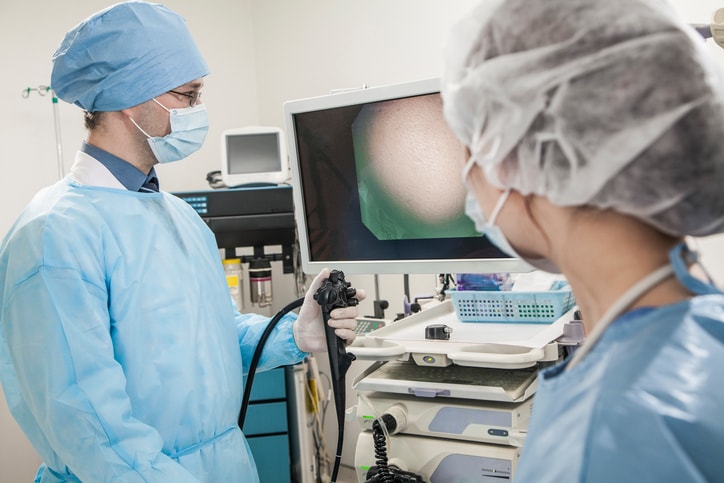Gastroenterologist
- Home
- Gastroenterologist
Gastroenterologist services
Endoscopy
An endoscopy is a procedure used in medicine to look inside the body. The endoscopy procedure uses an endoscope to examine the interior of a hollow organ or cavity of the body. Endoscopy may be used to investigate symptoms in the digestive system including nausea, vomiting, abdominal pain, difficulty swallowing, and gastrointestinal bleeding.


Colonoscopy
Colonoscopy or coloscopy is the endoscopic examination of the large bowel and the distal part of the small bowel with a CCD camera or a fiber optic camera on a flexible tube passed through the anus. Colonoscopy can remove polyps smaller than one millimeter. Once polyps are removed, they can be studied with the aid of a microscope to determine if they are precancerous or not.
Piles Banding
Hemorrhoids are swollen vessels in the lower rectum and anus caused by increased pressure or straining. They are common in both men and women – especially pregnant women. It’s a minimally invasive technique that involves tying the base of the hemorrhoid with a rubber band to stop blood flow to the hemorrhoid.


Foreign Body Removal
Foreign body retrieval is the removal of objects or substances that have been introduced into the body. Objects may be inhaled into the airway, swallowed or lodged in the throat or stomach, or embedded in the soft tissues. About 80 percent of foreign body ingestions occur among children. Most foreign bodies pass through the gastrointestinal tract without complication.
Polypectomy
A polypectomy is the surgical removal of a polyp. Colon polyps can be removed through open abdominal surgery, but more commonly it is performed during a colonoscopy. The endoscopist may snip off a small polyp with a forceps or remove a larger polyp with a snare that burns through the base of the polyp.


ERCP
Endoscopic retrograde cholangiopancreatography, or ERCP, is a procedure to diagnose and treat problems in the liver, gallbladder, bile ducts, and pancreas. It combines X-ray and the use of an endoscope—a long, flexible, lighted tube. ERCP helps providers diagnose and treat gallstones, inflamed gallbladders, bile duct blockages, pancreatitis, pancreatic cancer and other conditions.
EUS
Endoscopic ultrasound (EUS) is a minimally invasive procedure to assess digestive (gastrointestinal) and lung diseases. EUS uses a special endoscope with an ultrasound probe attached. A special endoscope uses high-frequency sound waves to produce detailed images of the lining and walls of your digestive tract and chest, nearby organs such as the pancreas and liver, and lymph nodes.


Oesophageal Stricture Dilatation
An oesophageal stricture is an abnormal tightening of the esophagus. Esophageal strictures can limit or block food and liquid that’s traveling from the throat to the stomach. Swallowing is difficult and you feel food is stuck in your throat. GERD is the most common cause of strictures, A dilation procedure can widen the esophagus and reduce symptoms.
Oesophageal Sclerotherapy & Banding
Endoscopic sclerotherapy is a procedure to treat bleeding esophageal varices and prevent future variceal bleeding. The procedure involves the passage of an esophagoscope and injection of a sclerosing agent into or around esophageal varices.


Achalasia balloon dilatation
Pneumatic balloon dilatation for the treatment of achalasia has been used for over a century and continues to have a role. Although relatively simple to perform, there are multiple steps that should be followed to deliver the treatment safely and effectively, and these are detailed. pneumatic dilatation is a useful option in the treatment of achalasia.
Glue injection
Gastric varices are enlarged veins found in the stomach. They also occur in portal hypertension. While gastric varices bleed less frequently than esophageal varices, the severity of bleeding and associated mortality is greater. When instilled into a varix using the standard method of intravariceal injection, the glue undergoes an instantaneous polymerization reaction, thereby plugging the lumen of the varix.


Bipolar coagulation
Bipolar coagulation is one of the more precise techniques, since theoretically, current flows only through tissue that is held between the tips of the forceps. Bipolar tubal coagulation is a good method of female sterilization for women who decide to have a tubal reversal procedure.


